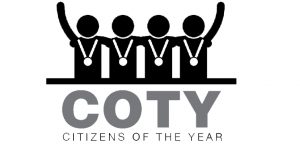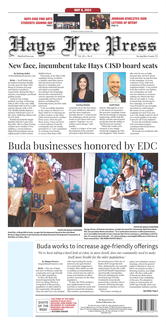By Moses Leos III
From Hollywood A-listers and professional athletes, to coffee baristas and your everyday newspaper reporter, beards are a prevalent sight among Americans these days.
One doesn’t have to look far in our neck of the woods to see how popular the trend has become. A jaunt to the square in San Marcos or downtown Austin can produce beards of every shape and size.
At one time, beards went hand-in-hand with age and wisdom. One can now add youth and trendiness to that list.
Twenty-to-thirty somethings have taken the lead as the purveyor of facial follicle growth. Now, that isn’t to say sporting a clean cut is no longer popular. However, the trend of growing facial hair has grown.
Charlie Brigence, who works at Alvin Ord’s Sandwich Shop in San Marcos and has grown a beard for 14 years, has seen how trendy beards have become.
“College kids are growing more beards,” Brigence said. “Used to be old men with a big white beard, and now it’s a young college guy and a big brown beard.”
Society and the way trends and fads work seem to play a slight role. Duck Dynasty, James Harden and the hipster movement are perfect examples.
But what we found out at the Hays Free Press is society doesn’t drive beard growth. Laziness often time does.
For many men (myself included), the ability to not spend time shaving is a primary factor.
One can look at it as a cost saving measure. Razors, shaving cream and aftershave aren’t getting any cheaper.
As beards are growing in popularity, they’re also becoming more accepted and common in the workplace.
Cyrus Bueche, who works in the medical field, grew his beard after leaving the military. He said he’s seen more doctors and nurses in Austin begin sporting beards.
Beards are becoming more prevalent in academia as well. Chris Gardner, who has had a beard for most of his 17-year teaching career, said beard growth among his peers follows a cyclical pattern. Recently, it’s becoming a popular trend for teachers.
“There is something professorial about the beard,” Gardner said. “If you see someone in a beard and a sports jacket, and you have to guess occupation, professor is going to fall in the top five.”
Corey Height, who has sported a beard for some time, believes facial hair is no longer seen as mysterious in the workplace. It was a reason why his father was clean-shaven during his years as a sales manager.
“Facial hair meant you were hiding something,” Height said. “Nowadays, that rule has been relaxed a little bit, in the way people do sales; especially the way men do sales. Beards are accepted.”
For some, beards are a symbol of status, which accompanies the growing trend.
“I think it’s great,” Issac Andrejczak said. “It brings back the concept that a hairy man is a better than a shaven man, which is awesome.





